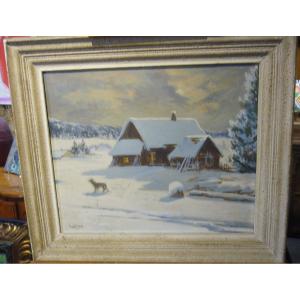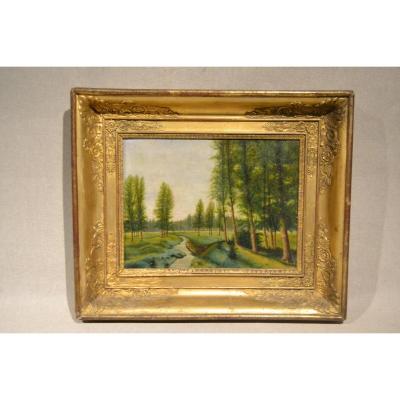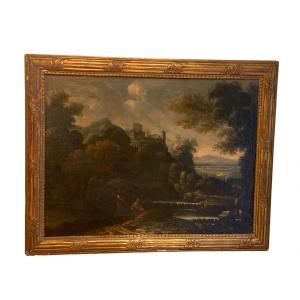Born in 1829 in Paris and died in 1900 in the same city, Paul-Désiré Trouillebert is a French painter. He learned painting at the École des Beaux-Arts in Paris and was particularly initiated in oil painting on canvas or panel. He trained in particular with the portrait painter Ernest Hébert and joined the studio of Charles-François Jalabert, a renowned portrait painter. Attached to the Barbizon School, Trouillebert painted in particular outdoors and studied from nature. He also worked in his studios in Paris or Candes or on his boat-studio which allowed him to travel on the rivers between Saint-Germain-sur-Vienne, Montsoreau and Candes. His production focuses on the rural landscapes he encounters around the Vienne, the Oise, the Loire and also the Somme. He pays great attention to trees, animals but also to the crops of the surrounding fields and waterways, forming the heart of his work. At the beginning of his career, he painted nudes and genre scenes for which he was noted. His very luminous compositions are marked by the large place given to water, the sky and the atmospheric effects that impact the landscape. Skillfully constructed, his landscapes exploit transparency effects, particularly characteristic of his work, which give the motifs a certain agitation. A particularly talented landscape painter, Paul-Désiré Trouillebert met with real success among his contemporaries. From the 1860s, he presented his paintings in various important Salons, such as the Salon des Artistes Français, but also at major French art dealers. His style is particularly appreciated for its combination of precision and lightness, its vaporous aspects and the great attention paid to the transcription of the light effects on the landscape during the day. His style is particularly close to that of his contemporary and friend, the landscape artist Jean-Baptiste Camille Corot.






























 Le Magazine de PROANTIC
Le Magazine de PROANTIC TRÉSORS Magazine
TRÉSORS Magazine Rivista Artiquariato
Rivista Artiquariato